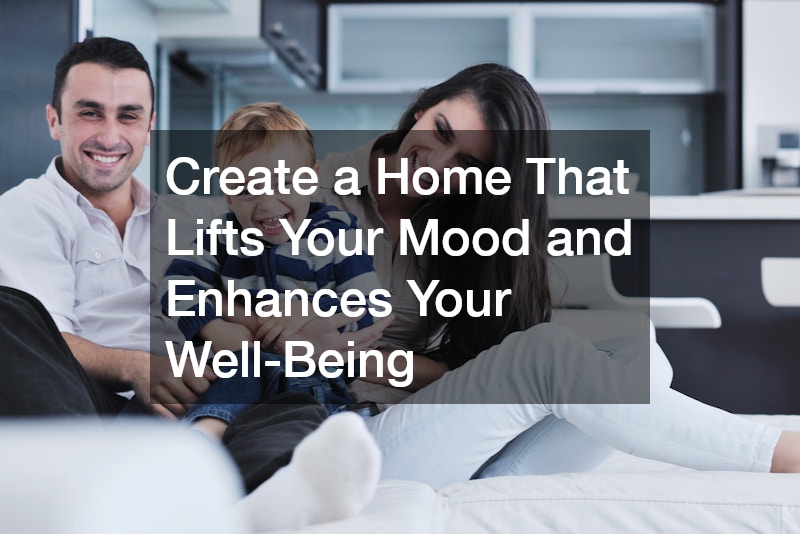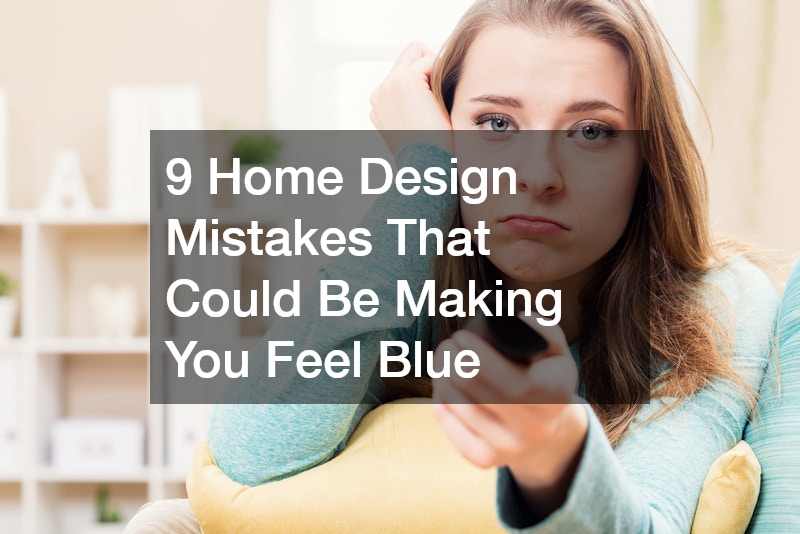Your home is your sanctuary, but certain design choices could be unintentionally sabotaging your mood. These common mistakes can create stress, discomfort, or even sadness in your living space. The good news? Simple fixes can turn things around and transform your home into a mood-boosting haven.
1. Overwhelming Clutter
A cluttered home can feel overwhelming and chaotic, making it hard to relax or focus. Whether it’s piles of papers or a mishmash of items on every surface, clutter can sneak up on you.
Why it hurts:
Physical clutter contributes to mental clutter. Studies show that messy environments can increase stress levels, lower productivity, and even disrupt sleep patterns.
The fix:
Start small—pick one room or area to tackle at a time. Use the “keep, donate, or discard” method to sort through items you no longer need. Invest in stylish storage solutions, like decorative baskets or modular shelving. Once you’ve decluttered, establish a habit of putting things back in their designated spots to maintain your tidy sanctuary.
2. Poor Lighting Choices
Lighting sets the mood for your entire home. The wrong lighting—whether too harsh or too dim—can make spaces feel uncomfortable or unwelcoming.
Why it hurts:
Harsh fluorescent lights can feel clinical and overstimulating, while dim, uneven lighting can make a room feel gloomy and sap your energy. Natural light deprivation, especially in darker months, can also negatively impact your mental health.
The fix:
Layer your lighting with a mix of ambient (overhead), task (lamps), and accent (spotlights or string lights) lighting. Use warm-toned LED bulbs for a cozy glow and maximize natural light by keeping windows unobstructed. For darker corners, add mirrors to reflect light and brighten the space.
3. Neglecting Color Psychology
The colors in your home influence how you feel. While some hues can energize or soothe, others might unintentionally create stress or discomfort.
Why it hurts:
Bold, aggressive colors like red or neon green may feel overwhelming in large doses, while excessive gray or beige can feel dull and uninspiring. Without intention, your color palette might not align with the mood you want to create.
The fix:
Use color psychology to guide your choices. For calmness, opt for soft blues, greens, or neutrals. Add pops of brighter colors like yellow or coral for energy in social areas. If you’re considering a larger refresh, professional painting services can help you select and apply the perfect shades to enhance your mood. For smaller updates, incorporate your desired hues through textiles, art, or accent furniture.
4. Furniture That Sacrifices Comfort for Style
Beautiful furniture can be tempting, but if it’s not functional or comfortable, it may be doing more harm than good.
Why it hurts:
Hard, unsupportive seating or awkward layouts can make your home feel uncomfortable, even uninviting. Over time, this can affect how much you enjoy spending time in your own space.
The fix:
Choose furniture that strikes a balance between style and comfort. Test out couches and chairs in person when possible, focusing on support and softness. Rearrange furniture to encourage conversation and flow. Use throw pillows or cushions to make stylish but stiff pieces cozier.
5. Lack of Greenery
Plants bring life and vibrancy to a home, but they’re often overlooked in modern design. This omission can leave your space feeling sterile or lifeless.
Why it hurts:
Studies show that plants reduce stress, improve air quality, and even boost creativity. Without them, your home might lack a sense of vitality.
The fix:
Add low-maintenance plants like snake plants, pothos, or succulents to brighten your space. Not a green thumb? Opt for realistic faux plants for the same aesthetic benefits without the upkeep. Place plants in areas where they can be easily seen and appreciated, like near windows or on shelves.
6. Ignoring Personalization
Homes that feel impersonal or generic can leave you feeling disconnected from your environment.
Why it hurts:
When your home lacks personal touches, it may feel like a temporary living space rather than your sanctuary. This can prevent you from feeling fully at ease.
The fix:
Add elements that reflect your personality and memories, such as family photos, artwork, or travel souvenirs. Incorporate your favorite colors or patterns into the décor. Creating a gallery wall or curating a special nook can make your home truly yours.
7. Overloading with Too Many Patterns
Patterns can add interest to a room, but too many competing designs can make your space feel chaotic.
Why it hurts:
Visual noise from clashing patterns can overwhelm the senses, making it harder to relax or focus in a room.
The fix:
Stick to a cohesive design scheme by mixing no more than three patterns in complementary colors. Balance bold patterns with solids or neutral tones to maintain harmony. Layer textures instead of patterns to create depth without overloading the space.
8. Neglecting Functional Layouts
Even the most stylish rooms can feel uncomfortable if the layout isn’t functional.
Why it hurts:
Poor furniture placement can disrupt flow and make daily tasks, like walking through the room or finding light switches, more difficult. This can create unnecessary frustration.
The fix:
Arrange furniture to promote easy movement and conversation. Avoid blocking windows or doorways and ensure frequently used items are easily accessible. Use rugs or room dividers to define areas in open-plan spaces.
9. Skimping on Cozy Textiles
The right textiles can transform a room, making it warm and inviting. Without them, your home may feel cold and uninviting.
Why it hurts:
Bare floors, walls, and furniture can make spaces feel stark and unwelcoming. This lack of softness might make it hard to feel relaxed.
The fix:
Layer in soft elements like plush throw blankets, textured rugs, and cozy pillows. Use curtains to add warmth and soften harsh lines. Opt for natural fabrics like cotton or wool for a more comforting feel.
Final Thoughts
By addressing these nine common design mistakes, you can create a home that lifts your mood and enhances your well-being. Small changes, like rearranging furniture or adding a plant, can have a big impact on how you feel in your space. Ready to transform your home into a haven of happiness? Start with one tip today and watch your mood soar!
.


